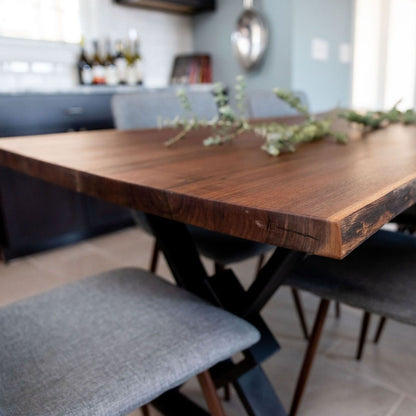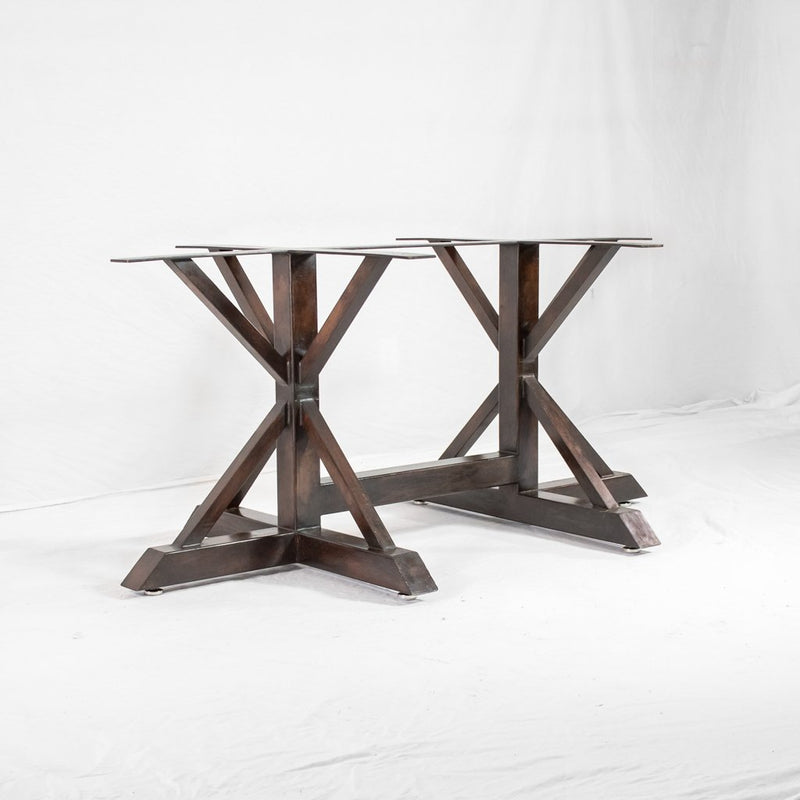Transform Your Dining Space with Stylish Dining Room Table Legs
Transform Your Dining Space with Stylish Dining Room Table Legs
Blog Article
From Traditional to Modern: Locate the Suitable Dining-room Table Legs for Your Style
While classic styles such as cabriole and transformed legs evoke a sense of ageless class, contemporary designs like barrette and geometric alternatives offer a possibility for striking aesthetic interest. As you take into consideration these aspects, the concern remains: just how can you seamlessly integrate these varied leg designs to develop an unified eating experience?
Understanding Table Leg Styles
The variety of dining-room table leg styles can considerably affect both the appearances and performance of the room. Each leg design contributes unique functional features and aesthetic aspects, satisfying diverse layout choices and use requirements. Comprehending these designs is important for choosing the right eating table that straightens with your general interior decoration vision.
For example, tapered legs provide a tidy, traditional look that can enhance an area's beauty, while stand bases provide security and maximize legroom, making them suitable for smaller sized areas. Barrette legs, a trademark of mid-century modern layout, introduce an industrial style, enabling a ventilated, open feeling. Similarly, trestle legs stimulate rustic beauty, providing durable support and a feeling of eternity.
Additionally, the option of products plays a significant function. Wooden legs can bring heat and structure, whereas steel choices usually share a streamlined, contemporary ambiance. Inevitably, comprehending table leg designs is essential for developing a cohesive eating area that mirrors individual style while guaranteeing practicality and comfort. By thoughtfully thinking about these elements, you can boost both the useful and visual allure of your eating space.
Traditional Table Leg Options
When choosing eating area table legs, standard choices commonly symbolize classic style and workmanship. These layouts mirror an abundant heritage and a dedication to high quality, making them perfect for those who value classic visual appeals.
Among the most renowned conventional leg designs is the cabriole leg, characterized by its stylish curved shape. This style typically features decorative makings and is most frequently located in Queen Anne and Chippendale furnishings. An additional prominent choice is the turned leg, which flaunts a collection of smooth, rounded shapes that give a timeless appearance while preserving security.
Moreover, the straight leg, while basic, provides a strong and basic framework that can blend seamlessly with a range of tabletop designs. For those attracted to ornate describing, claw-and-ball feet legs evoke a sense of magnificence and can function as a sensational centerpiece in any eating area.
Last but not least, pedestal bases, although not strictly legs, supply a different traditional option that enables adequate legroom and can be wonderfully carved. Each of these standard leg styles adds to the total setting of a dining-room, weding feature with visual allure.

Modern Table Leg Layouts
Modern table leg layouts provide a varied variety of designs that stress tidy lines and ingenious materials. These styles often prioritize capability while working as striking centerpieces within a dining space. Minimalist appearances prevail, with legs crafted from products such as steel, glass, and crafted wood, which add to a airy and modern feel.
One prominent layout is the hairpin leg, characterized by its slim, conical structure that gives stability without frustrating the table top (dining room table legs). This design is often located in mid-century modern furnishings and can effortlessly enhance various table shapes. Another fad is making use of geometric shapes, where legs may tackle asymmetrical or angular forms, adding aesthetic rate of interest and a touch of creativity

Mixing Designs for Special Areas
Usually, homeowners look for to develop special eating rooms that show their individual style by blending numerous design components. This technique permits the unification of diverse visual appeals, causing a harmonious yet unique environment. Coupling a rustic wood table with streamlined, modern-day steel legs can produce an eye-catching comparison that boosts the space's general charm.
Furthermore, incorporating click for info vintage table legs with contemporary tabletops can stimulate a sense of history while keeping a contemporary sensibility. Such combinations not only showcase private taste however additionally urge creative thinking, enabling home owners to curate a space that feels both individual and welcoming.
Shade plays a crucial role in this mixing procedure; choosing table legs that complement or comparison with the existing color pattern can enhance aesthetic rate of interest. For example, whitewashed legs can soften the boldness of a dark table surface area, developing a well balanced aesthetic.
Tips for Picking the Right Legs
Selecting the right table legs is crucial for achieving both performance and aesthetic charm in your dining space. Begin by considering the total style of your area. Standard settings take advantage of legs that feature detailed makings or turned layouts, while modern rooms might require smooth, minimalist designs.
Following, examine the elevation and security of the legs. dining room table legs. Standard table vary between 28 to 30 inches in height, so guarantee the legs match this measurement for comfort. Furthermore, robust products, such as wood or steel, can enhance stability and longevity
Review the leg form too-- alternatives include directly, tapered, or stand layouts. this content Straight legs supply a traditional appearance, while tapered legs can include a touch of sophistication. Pedestal bases give enough legroom and are excellent for smaller see here sized spaces.
Final Thought
In summary, selecting the ideal dining space table legs requires careful consideration of both conventional and modern designs. Standard options such as cabriole and turned legs offer classic elegance, while modern designs like hairpin and geometric shapes give a modern touch. By balancing leg style, height, and material with the general design, a natural and inviting environment can be achieved. Ultimately, the selected table legs should reflect the desired aesthetic, improving the eating experience within the space.
The selection of eating space table leg styles can considerably affect both the visual appeals and capability of the room. Inevitably, understanding table leg designs is necessary for creating a natural eating location that mirrors individual design while ensuring usefulness and comfort.One of the most iconic conventional leg designs is the cabriole leg, defined by its graceful rounded form. Straight legs offer a traditional look, while conical legs can add a touch of elegance.In summary, selecting the suitable dining room table legs requires mindful consideration of both contemporary and conventional styles.
Report this page